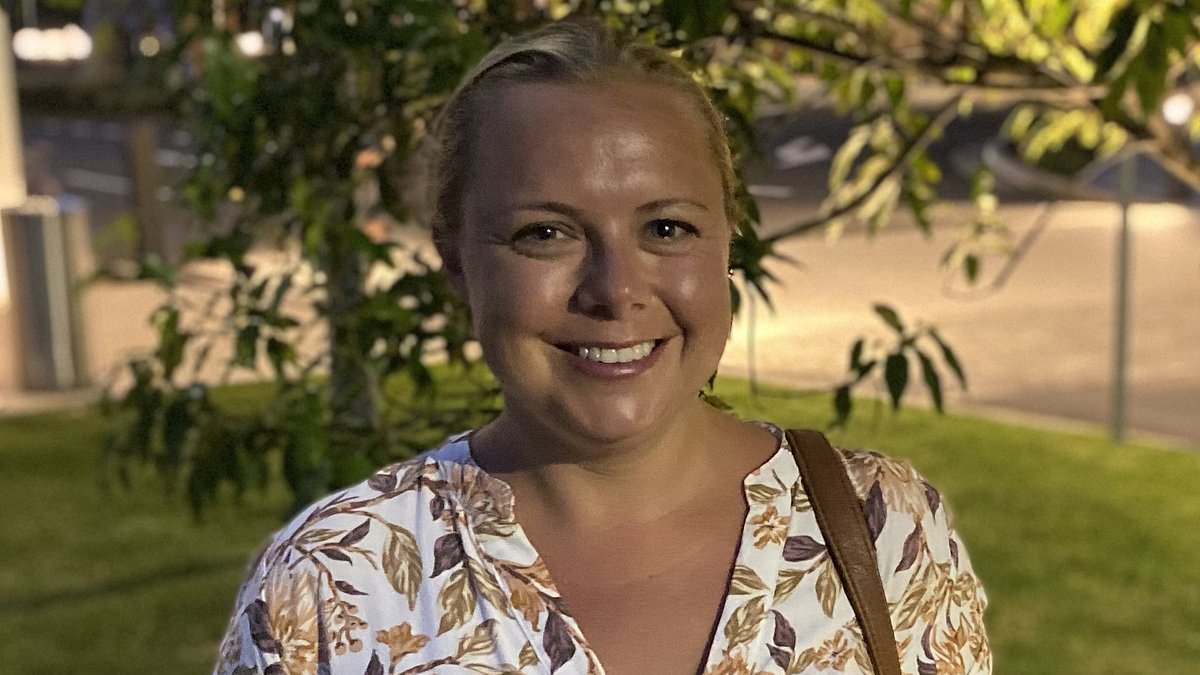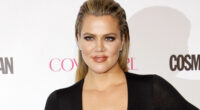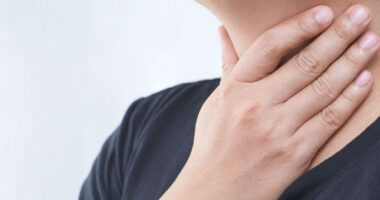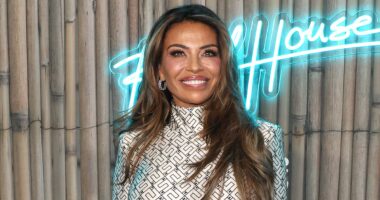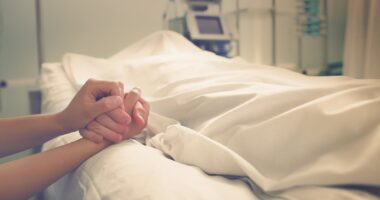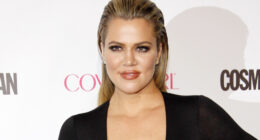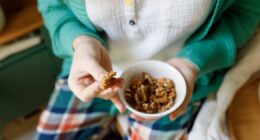Steph Hilton always knew she wanted to be a mother.
Entering her thirties as a single woman, she planned on having her fertility checked as a proactive step towards a future family.
But before she could make the appointment, she began to feel unwell. As well as suffering bouts of anxiety and depression, Steph started to have hot flushes.
‘I had one in front of mum, and she said, “Wow, that’s just like the ones I get,”‘ Steph tells Daily Mail Australia.
Her mother was, of course, referring to the menopause, but at 32, Steph assumed it was a symptom of something else.
Her long hours working as a teacher made her suspect stress or burnout, or perhaps some kind of virus.
But after her GP carried out tests, she received a shocking diagnosis: premature ovarian insufficiency. Her ovaries were no longer working.
‘It was advanced. It was already full-blown menopause,’ Steph says.

In her early thirties, Steph wanted to get her fertility checked as a proactive step towards starting a family. But before she could book the appointment she became unwell
Steph was just about to turn 33 and this was a transition she thought was more than 10 years away.
‘It was a huge shock. Doctors can’t tell me why and they don’t know how common it is,’ Steph says.
The biggest sense of loss was the brutal realisation she could no longer have a biological child.
‘I was devastated I couldn’t have my own baby,’ Steph says. ‘Sitting in the GP’s office, it was immediate tears… when I saw my parents, I broke down completely.’
In hindsight, Steph realised she had other symptoms, but with menopause typically starting at about 45, she had no reason to consider it the cause.
She had put her anxiety and depression down to the normal ups and downs of life. She’d connected irregular periods with coming off the pill, and two different doctors had brushed off her concerns about a six-month cycle as ‘nothing to worry about’.
After her diagnosis, the symptoms came hard and fast.
Before starting hormone replacement therapy (HRT), Steph had insomnia and struggled to string sentences together.

Steph was suffering with anxiety and depression, as well as hot flushes. But she could not have imagined the diagnosis doctors would give her
‘I’m still not great,’ the now 39-year-old says.
‘I forget words. I stop and completely forget what I’m talking about.’
Seeing her friends getting pregnant, and her ‘rapid ageing’, made Steph feel like a social outcast.
‘I put on weight where I’ve never carried weight before, and I have osteopenia, which is a step before osteoporosis,’ she says.
‘My skin has lost its elasticity, my hair is thinning… I look at my friends and none of them have to deal with that yet.’
Unable to control what was happening to her body, Steph turned her focus to motherhood.
While her ovaries didn’t work, she could still carry a child.
Her generous older sister offered to give Steph her eggs. With the help of an anonymous sperm donor, they made 11 embryos.
Steph started the IVF process with a ‘huge sense of hope’, but heartbreak followed.
After multiple failed transfers, one finally stuck. At the end of 2022, Steph was pregnant for the first time at the age of 37. ‘I was ecstatic; I told everyone.’
But it wasn’t to be. After light bleeding, Steph found out at her seven-week scan there was no heartbeat.

Since being told she is in early menopause, Steph has been trying to have a baby on her own using an anonymous sperm donor and her sister’s eggs. After falling pregnant, she was devastated when her daughter Daisy was stillborn in August 2023
While ‘broken-hearted’, she wanted to try another round as soon as possible. And six weeks later Steph was pregnant again.
This time, she cautious with her enthusiasm, even when she saw a flicker of a heartbeat at the 10-week scan.
As her hope grew, she faced another emotional hurdle, with the sudden passing of her father following a short two-year cancer battle.
‘The last thing I said to him was, “We’re having a girl.'” He said, “Hooray”, and it was the last thing he said to me,’ Steph says.
‘It was a hard balance of pregnancy joy and loss. We had hopes on the baby being a bright spot and something to look forward to.’
Then, at the 20-week scan, the pregnancy took a distressing turn.
An anomaly was found in her daughter’s heart. Further testing confirmed a congenital heart defect and a genetic condition which would result in severe disabilities.
A few weeks later, Steph’s daughter Daisy Claire was stillborn on August 31, 2023, at Northern Beaches Hospital.
‘I wasn’t going to name her, but the moment I felt her leave my body, I thought, “Oh my God”… it was amazing how quickly I fell in love with her,’ Steph says.
‘The first thing I thought was how beautiful she looked. She looked like me and my sister; it was amazing.’

Steph is single and wants to continue down the IVF path, because adoption and fostering are far more difficult for single parents
Steph spent the night holding Daisy, before she had to be taken away. The ashes of Daisy and Steph’s dad were sprinkled together.
‘I look back on it, and it’s a bit of blur. It can feel like life is piling up on you… I’m very lucky to have an amazing family and friends,’ Steph says.
After waiting three months for her body to recover, Steph tried IVF again with two more embryos, but neither took. She was then advised to try with different eggs.
With Australian law restricting payment for egg donors, infertile couples must rely on the generosity of friends and family.
Luckily for Steph, her good friend, a mother-of-two, offered to donate her eggs and she was able to make nine more embryos.
The first embryo took, before Steph lost the baby a week later. A second transfer failed.
‘It’s been a huge rollercoaster for everyone involved,’ Steph admits.
With each embryo transfer costing $4,000, Steph was financially, as well as emotionally, exhausted.
While she has decided to take a short break from IVF to save money and rest her body, there hasn’t been a moment of not yearning for a child.
‘I’m at a standstill, I can’t move forward with my life until it happens or doesn’t happen,’ she says. ‘I’ve proven I can carry a baby; it’s about finding the right embryo.’
Steph has been single throughout this journey and continues to focus on IVF, because adoption and fostering and much harder options for a single parent.
Friends of Steph’s have set up a GoFundMe to help support her parenting dream.
‘Your donations, no matter how small, will give her the hope and opportunity to take the next step toward becoming a mother,’ it reads.
Steph is optimistic her loss turns to joy soon, but also hopes her story inspires women with motherhood plans to check their fertility.
‘If you want kids, or think you want kids, it’s never too early to get tested,’ she says.
‘Don’t ever assume, just because you’re female, that it’s meant to happen, and it will. If kids are something you want, go for the tests.’

